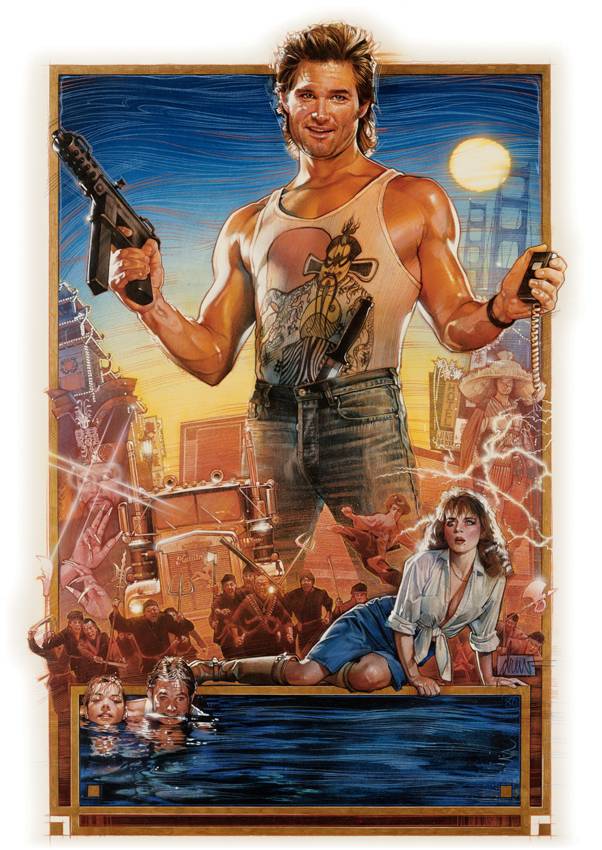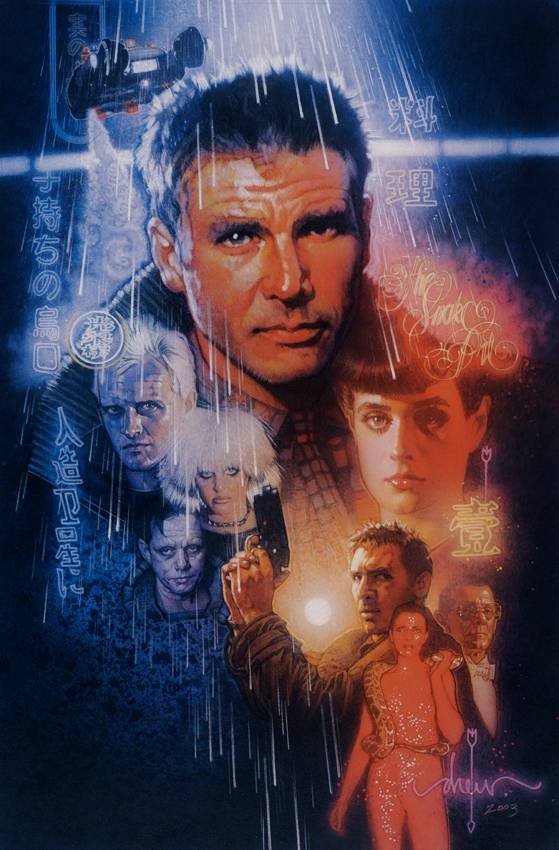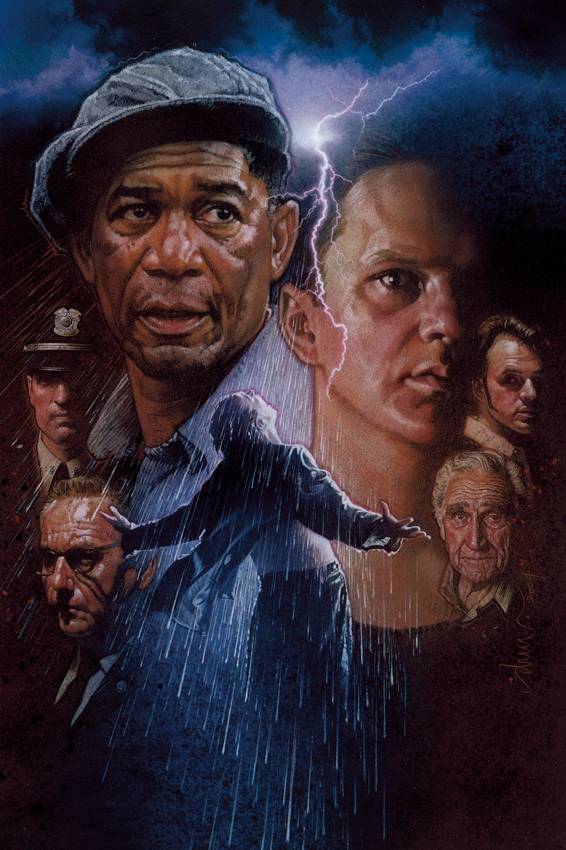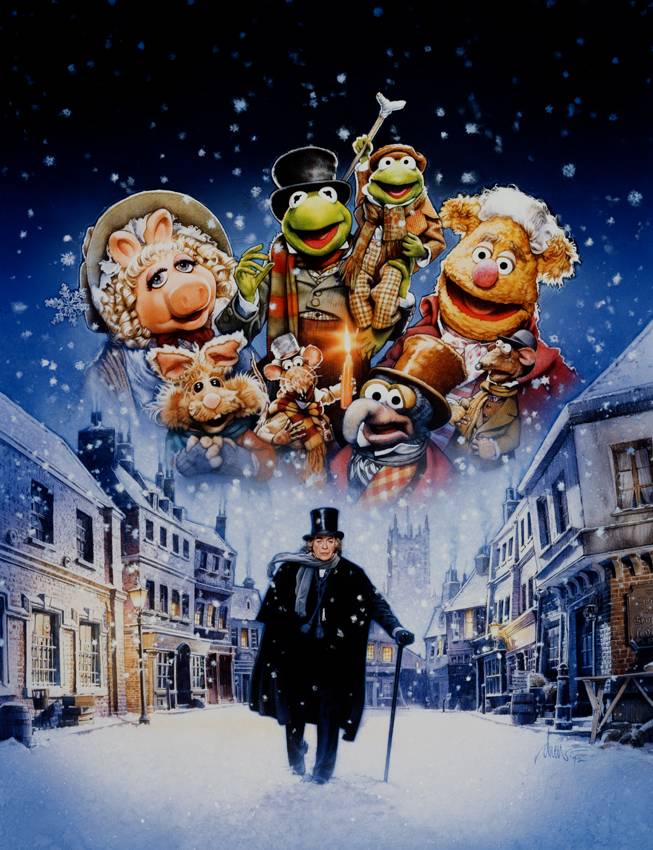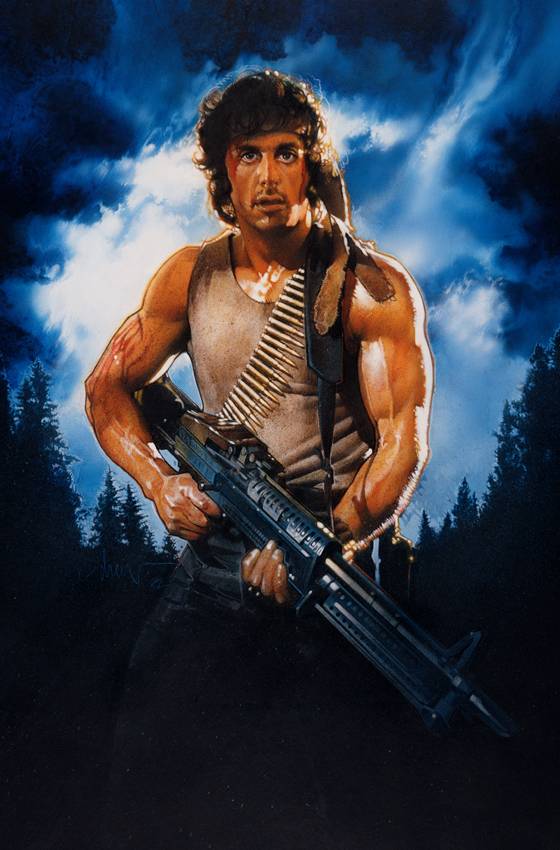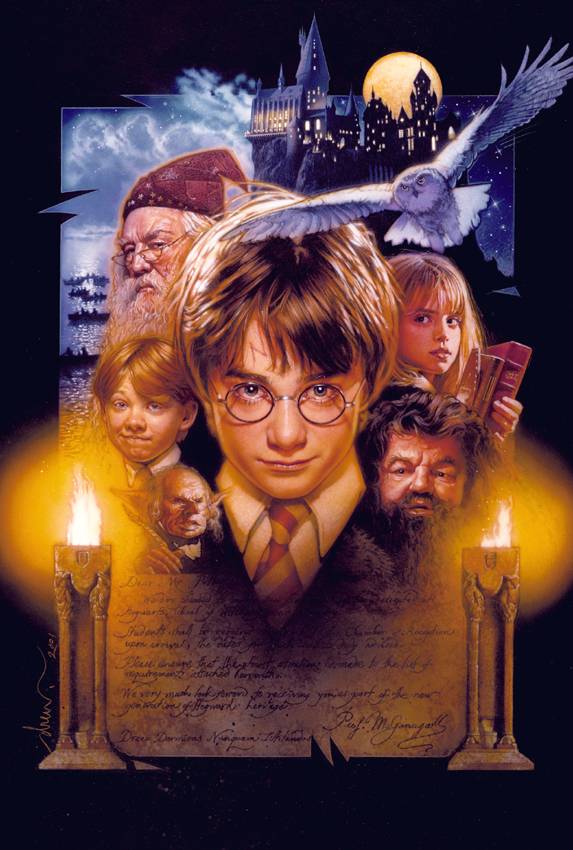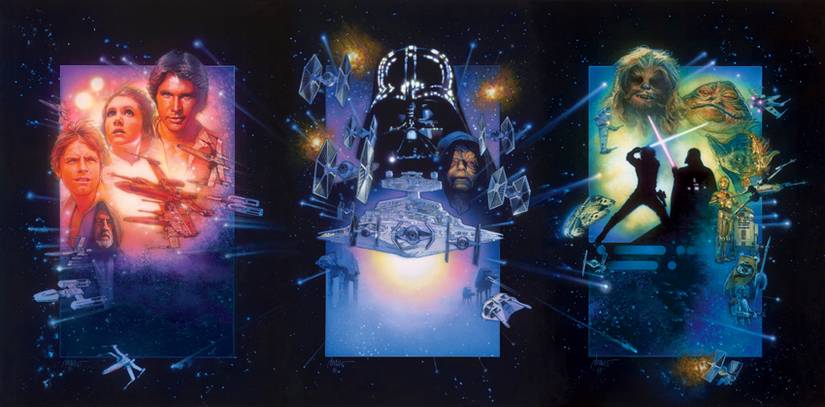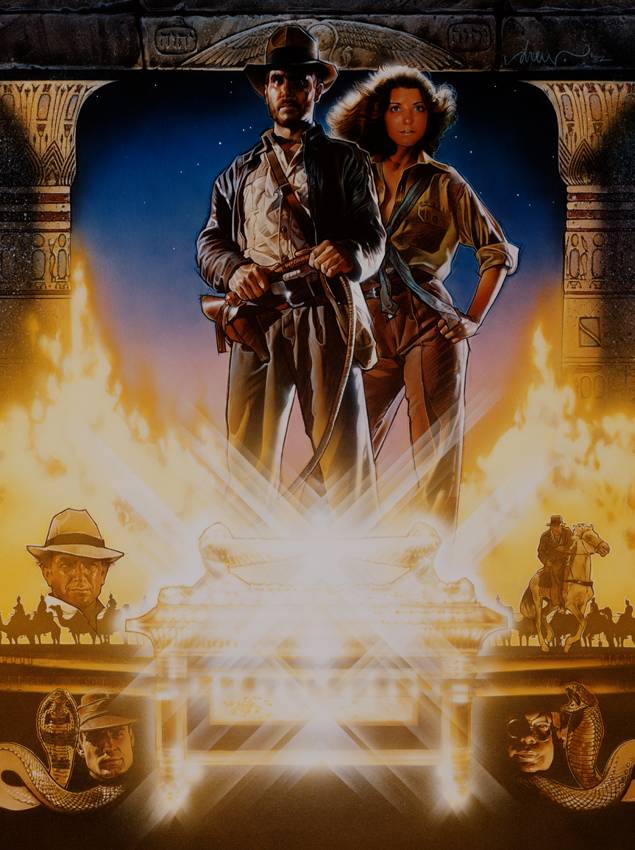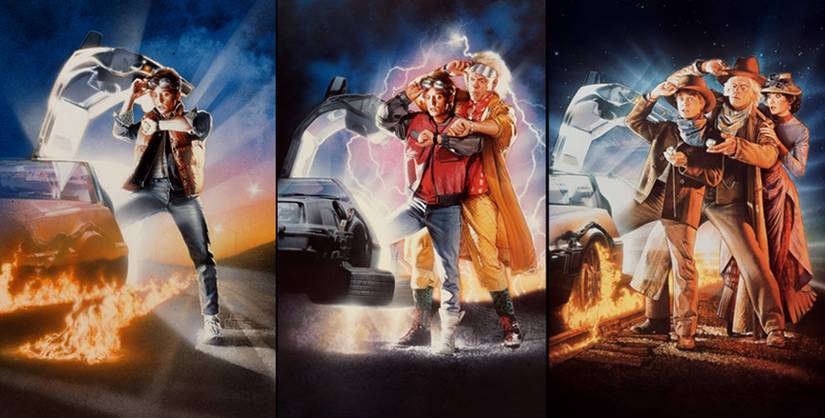Following the sad news of legendary artist Drew Struzan’s recent passing, we’re taking a look back at and celebrating some of his most iconic work. Drew Struzan is likely one of the most important figures in film. Even though most people may not know his name, they certainly know his art. His movie posters were more than mere promotional material, but works of art in their own right that have captivated the imagination of movie fans for nearly 50 years. He changed the way movie posters look and defined a style for a generation.
With over 150 movie posters to his name, here are Drew Struzan’s 10 most iconic works in that domain.
‘The Thing’ (1982)
John Carpenter’s The Thing is a masterclass in suspense and tension, and also outright blood and gore. While it struggled at the box office at the time of its release, it has since been acknowledged as one of the most important and influential movies in the sci-fi and horror genres, receiving particular praise for its oppressive, claustrophobic atmosphere, its use of practical effects, and its breathtaking cinematography.
Struzan Defied All Expectations
In the spring of 1982, Drew Struzan received a last-minute commission from Universal Pictures to create a poster for John Carpenter’s The Thing, with less than 24 hours to complete it. Given no reference materials, actors, or monster designs and only a very brief synopsis, Struzan was forced to think outside the box and indulge in some serious improvising. Based on a photo his wife quickly took of him, Struzan painted through the night, creating the now-iconic image of a faceless, parka-clad figure radiating light amid icy blue tones.
Against all odds and defying expectations, the surreal, mysterious design perfectly captured the film’s themes of paranoia and identity. By morning, the still-drying artwork was rushed to Universal, becoming one of the most memorable movie posters ever made.
‘Big Trouble in Little China’ (1986)
After achieving the impossible by bringing John Carpenter’s abstract entity alive for The Thing poster, Struzan was brought back to work on Carpenter’s action-comedy Big Trouble in Little China.
Suitably Chaotic
The result is probably Struzan’s most chaotic artwork ever – a mishmash of multiple elements from the movie, haphazardly plastered around Kurt Russel’s Jack Burton character. It’s exactly this chaos, though, that makes the poster so appropriate and memorable. Carpenter’s movie is quirky, campy, and action-packed, and this is reflected perfectly in the wild, energetic composition.
‘Blade Runner’ (1982)
Set in 2019, the groundbreaking sci-fi epic Blade Runner, released in 1982, envisioned a sprawling, rainy, dystopian Los Angeles with flying cars and highly advanced androids, known as replicants. A commercial flop at the time, it is now considered one of the greatest and most influential sci-fi movies ever made.
A Dazzling Display of Dystopia
Featuring a realistic portrait of Harrison Ford as Rick Deckard alongside other cast members set against a futuristic, smoky cityscape, Struzan’s poster employs cinematic lighting techniques to evoke the movie’s mystery and tension, making it an iconic representation of Ridley Scott’s sci-fi classic.
‘The Shawshank Redemption’ (1994)
A prison-based epic chronicling the unlikely friendship between two inmates, The Shawshank Redemption was a sleeper hit that is now widely regarded as one of the greatest movies of all time.
One of Struzan’s Most Powerful Pieces
The poster is an evocative composition that depicts Tim Robbins’ Andy Dufresne character standing, arms akimbo, under the pouring rain, surrounded by realistic portrait illustrations of the movie’s other key characters. It’s a dramatic, atmospheric poster that is suitably attention-grabbing, evoking the poignant yet hopeful nature of the film’s plot.
‘The Muppet Christmas Carol’ (1992)
Perhaps the most beloved retelling of Charles Dickens’ Christmas classic features Jim Henson’s cast of lovable Muppets. Originally released in 1992, The Muppet Christmas Carol sees Sir Michael Caine take on the role of Ebenezer Scrooge, as he is visited by a variety of puppet ghosts. Elsewhere, we see Kermit the Frog as Bob Cratchit and Fozzie Bear as “Fozziwig” with narration from The Great Gonzo and Rizzo the Rat.
It masterfully balances humor and gravitas, blending The Muppets’ playful, chaotic energy with the story’s darker, more serious themes. Michael Caine’s deadpan performance as Ebenezer Scrooge anchors the film, providing a straight-faced counterpoint that heightens both the comedy and the emotional weight, making the movie both charmingly silly and suitably sincere.
A Beautiful Juxtaposition of Styles
It’s exactly this clash of tones that Struzan focuses on for his movie poster. It’s an eye-grabbing composition that sees Scrooge trudging through a bleak, snowy Victorian London. Above him, though, are colorful portraits of each of the main Muppet characters – gleefully smiling – perfectly juxtaposing Jim Henson’s playful Muppet madness with the darkness of Charles Dickens’ original story.
‘First Blood’ (1982)
First Blood exploded onto theater screens around the world in 1982, giving us what would become one of cinema’s most iconic and enduring action heroes in Rambo. Now the star of five feature-length movies and a cultural phenomenon in his own right, Sylvester Stallone’s larger-than-life war veteran character is known for his stoic demeanor, brutal combat skills, bulging biceps, and trademark bandana.
Struzan’s Imagery has Been Lovingly Imitated and Parodied Over the Years
Struzan’s realistic illustration of Rambo perfectly captures his raw intensity. The poster itself is one of the most influential action movie one sheets of all time. Depicting Rambo wearing a white tank top, holding a large automatic rifle with an ammo belt over his shoulder, it’s an image that has been imitated and parodied multiple times since, with the “hero with big gun” pretty much becoming a trope in itself.
‘Harry Potter and the Sorcerer’s Stone’ (2001)
Based on J. K. Rowling’s bestselling children’s fantasy novels, Harry Potter has become one of the most successful movie franchises of all time. Harry Potter and the Sorcerer’s Stone (AKA Harry Potter and the Philosopher’s Stone) was the first movie in the series and a prime example of the effectiveness of Struzan’s artwork.
The Poster Captures the Movie’s Wonder and Magic
The poster features a young Harry Potter surrounded by key characters and moments from the movie, rendered in Struzan’s signature detailed, painterly style, perfectly capturing the wonder and magic of the movie. The artwork has become synonymous with the franchise, and while the sequels’ posters chose to adopt a mix of photographic and digital artwork, his influence is clearly visible. He did create a poster for Harry Potter and the Chamber of Secrets, but it wasn’t used in the final marketing campaign and has, instead, been featured in art exhibitions showcasing his work.
‘Star Wars’: Special Edition Trilogy (1997)
Perhaps the work that Struzan is most known for is his art for the Star Wars franchise. Interestingly, though, he didn’t do the original art for the first Star Wars poster – that was done by Tom Jung. He did design the “circus” poster with Charles White III for the 1978 rerelease, though.
Struzan Unified the Original Three Movies
His most iconic work when it comes to Star Wars is the three designs he made for the original trilogy’s 1997 rerelease. These posters are especially beloved by fans because they present the trilogy as a unified piece of art. Coinciding with a renewed interest in the films, they became the definitive artwork associated with A New Hope, The Empire Strikes Back, and Return of the Jedi.
‘Raiders of the Lost Ark’ (1981)
Given just a short synopsis and a handful of reference images, Struzan went on to illustrate one of the world’s most recognizable movie posters. His artwork for Raiders of the Lost Ark depicts the now iconic adventurer standing tall.
Struzan Established the Franchise’s Iconic Promotional Look
While Struzan’s work was originally only intended for international releases, with the main poster being drawn by Richard Amsel, Steven Spielberg was so impressed with the art that Struzan was brought on to handle the poster art for the subsequent Indiana Jones films, establishing the iconic look of the legendary franchise’s promotional imagery.
‘Back to the Future’ (1985)
Given a tight deadline and little to go on, Marty McFly’s iconic pose featured on the Back to the Future poster is based on Struzan, himself, from a photo taken by his wife. Without having seen the movie, he had asked her to photograph him in poses he felt reflected the character, based on the description, and painted it with Michael J. Fox’s face in his place, standing by the iconic DeLorean.
Struzan Designed the Posters for the Entire Trilogy
Using his trademark blend of glowing, life-like character portraits and visual storytelling, Back to the Future’s poster artwork stands among his most celebrated work. Struzan returned to work on the film’s two sequels, helping cement the franchise as a pop culture phenomenon with a consistent and instantly recognizable visual identity.

